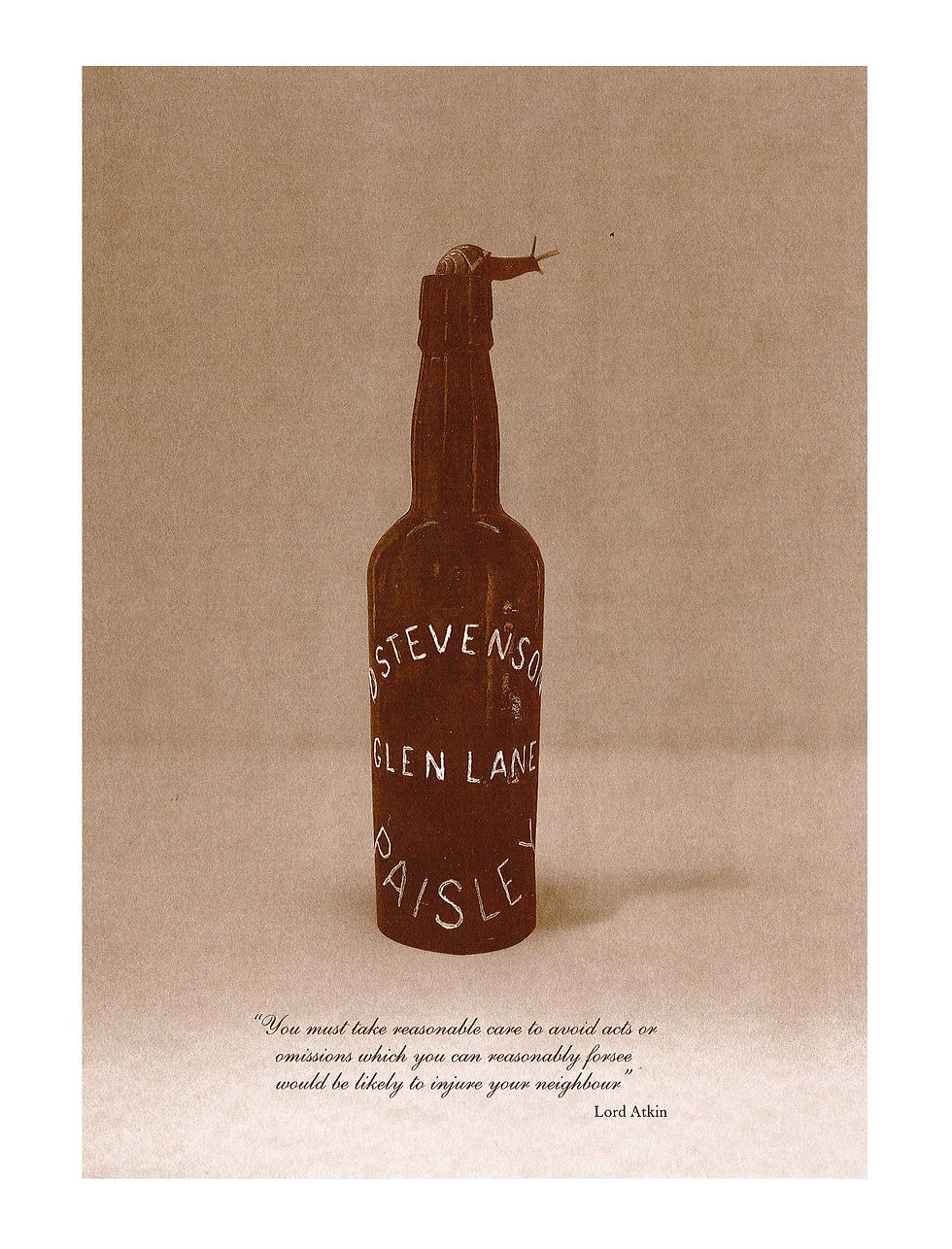Donoghue v Stevenson
- Vivian Weng
- May 1, 2022
- 2 min read
Updated: Jul 10, 2022
The Donoghue v Stevenson, also known as the ‘snail in the bottle’, is one of the most well-known and significant cases in history. It established the foundation of negligence law, which still forms the basis of many jurisdictions today. Here is the story of how it all happened:
In Scotland, 1928, Ms May Donoghue’s friend bought her a bottle of iced ginger beer while they were meeting at the Wellmeadow Café. Donoghue drank its contents swiftly, unaware of what was inside due to the container’s dark, opaque colour. After drinking most of the bottle, she became aware of a decomposed snail floating inside. A few days after the incident, Donoghue fell ill and was diagnosed with severe gastroenteritis.
Consequently, Donoghue lodged a writ in the Court of Sessions (Scotland’s highest civil court) against David Stevenson, the ginger beer manufacturer, seeking £500 damages. However, this initial action was unsuccessful as she could not sue Stevenson for breach of contract as she herself did not purchase the drink. But her solicitor was not willing to give up and claimed Stevenson owed a duty to his consumers to take reasonable care to ensure his products were safe for human consumption. At this time, this area of civil law was still new, and there had been no past precedent for this claim, so Donoghue’s argument was dismissed numerous times. Then finally, in the House of Lords on 26 May 1932, Lord Atkin delivered the judgement that Stevenson was responsible for the wellbeing of individuals who consumed his products, given that they could not be inspected and Donoghue was compensated for all damages.
This judgement had a lasting impact on society, setting a precedent for similar cases in the future and developing essential principles.
Duty of care:
Duty of care is a legal obligation placed on individuals to act in a certain way that ensures the safety and wellbeing of others. This principle has prompted the government to establish numerous legislations that protect consumers, such as the Trade Practices Act (Commonwealth,1974).
Negligence:
Negligence is when someone fails to act with reasonable concern and responsibility, resulting in harm or damage to others. The Donoghue v Stevenson case has proven that negligence is a tort (civil wrong) which has influenced many rulings, e.g. Rylands v Fletcher. To make a claim of negligence, one must prove that there is a duty of care that has been breached and causes significant injury or suffering to others.
Neighbour principle:
This principle is defined in Lord Atkin’s ruling when he says, “You must take reasonable care to avoid acts or omissions which you can reasonably foresee would be likely to injure your neighbour.” It had developed the idea that the tort of negligence extends beyond the immediate party, seen when Donoghue faced the impacts of the gingerbeer even though she did not directly buy it.
Who knew that a snail and a gingerbeer could have such a massive impact on our world today?

References:
Case study: Donoghue v. Stevenson (1932). Lawgovpol.com. Retrieved from https://lawgovpol.com/case-study-donoghue-v-stevenson-1932/
Donoghue v Stevenson [1932] UKHL 100 (26 May 1932). (n.d.). Retrieved from https://www.bailii.org/uk/cases/UKHL/1932/100.html
Sir Harry Gibbs Legal Heritage Centre | Supreme Court Library Queensland. (n.d.). Retrieved from https://legalheritage.sclqld.org.au/donoghue-v-stevenson-1932-ac-562





Comentarios